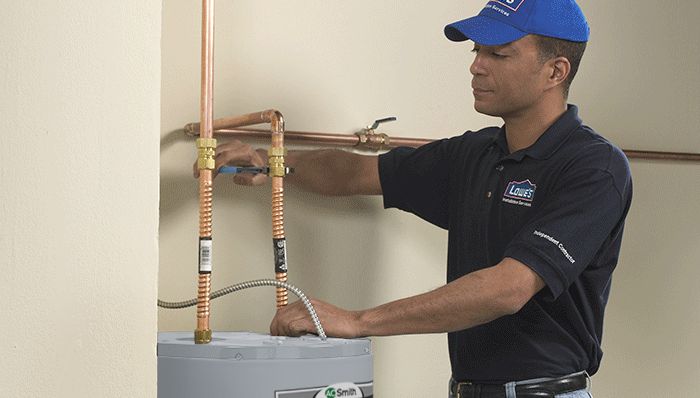The article down the page about Tips For Maintaining Your Hot Water Heater is relatively stimulating. Don't skip it.

Hot water is necessary for everyday comfort, whether it's for a rejuvenating shower or washing meals. To ensure your hot water system runs effectively and lasts much longer, normal maintenance is key. This short article supplies practical tips and insights on how to preserve your home's warm water system to prevent disturbances and expensive repair services.
Introduction
Preserving your home's hot water system might seem challenging, but with a couple of easy actions, you can ensure it runs smoothly for years to come. This overview covers whatever from recognizing your warm water system to DIY upkeep suggestions and knowing when to hire expert help.
Value of Keeping Your Warm Water System
Normal upkeep not only expands the lifespan of your warm water system but also guarantees it runs efficiently. Disregarding maintenance can result in lowered performance, higher power bills, and also early failure of the system.
Indications Your Hot Water System Requirements Upkeep
Recognizing when your warm water system needs focus can avoid significant problems. Keep an eye out for signs such as inconsistent water temperature level, unusual noises from the heating system, or corroded water.
Flushing the Water Heater
Purging your hot water heater eliminates sediment buildup, boosting efficiency and extending its life.
Checking and Replacing Anode Rods
Anode poles stop rust inside the container. Inspecting and replacing them when broken is essential.
Complicated Concerns Calling For Expert Aid
Instances include significant leakages, electrical troubles, or if your hot water heater is continually underperforming.
Regular Professional Maintenance Advantages
Expert maintenance can consist of complete examinations, tune-ups, and ensuring compliance with safety standards.
Checking and Readjusting Temperature Level Setups
Changing the temperature settings ensures optimal performance and safety.
DIY Tips for Maintenance
You can do numerous upkeep jobs yourself to keep your hot water system in top condition.
Looking for Leaks
Regularly examine pipelines and links for leaks, as these can lead to water damage and greater costs.
Understanding Your Hot Water System
Before diving into maintenance jobs, it's helpful to recognize the basic components of your warm water system. Generally, this consists of the water heater itself, pipes, anode poles, and temperature controls.
Monthly Upkeep Tasks
Regular monthly checks can help capture small concerns before they escalate.
Checking Pressure Alleviation Valves
Checking the stress relief valve guarantees it functions correctly and protects against excessive stress build-up.
Protecting Pipelines
Insulating warm water pipelines decreases warmth loss and can save power.
When to Call a Professional
While DIY upkeep is useful, some concerns require expert know-how.
Conclusion
Routine upkeep of your home's warm water system is vital for performance, longevity, and expense savings. By adhering to these tips and understanding when to look for specialist help, you can make sure a trusted supply of warm water without unexpected interruptions.
How to Maintain an Instant Hot Water Heater
Before tinkering with your hot water heater, make sure that it’s not powered on. You also have to turn off the main circuit breaker and shut off the main gas line to prevent accidents. Also turn off the water valves connected to your unit to prevent water from flowing into and out of the appliance. 2. When you’re done, you have to detach the purge valves’ caps. These look like the letter “T†and are situated on either side of the water valves. Doing so will release any pressure that has accumulated inside the valves while at the same time avoid hot water from shooting out and burning your skin. 3. When the purge valves’ caps are removed, you have to connect your hosing lines to the valves. Your unit should have come with three hoses but if it didn’t, you can purchase these things from any hardware or home repair shops. You can also get them from retail stores that sell water heating systems. Read the user’s manual and follow it to complete this task properly. When the hosing lines are connected, open the purge port’s valves. 4. You should never use harsh chemical cleaners or solutions when cleaning your unit. Make use of white vinegar instead. It should be undiluted and you’ll probably use about 2 gallons. 5. Now flush your water heater. This task should probably take about 40 minutes. We can’t give you specific directions for this because the procedure is carried out depending on the type, model and brand of your heater. With that being said, refer to the user’s manual. 6. When you’re done draining the unit, you have to turn off the purge port valves again. Remove the hosing lines that you earlier installed on each of the water valves. Put the valve caps (purge port) back in their respective places and be very careful so as not to damage the rubber discs that are found inside these caps. 7. Now that everything’s back in place, check your user’s manual again to find out how to reactivate your water heating system. 8. Once it is working, turn one of your hot water faucets on just to let air pass through the heater’s water supply pipes. Leave the tap on until water flows smoothly out of it. https://www.orrplumbing.com/blog/2014/september/how-to-maintain-an-instant-hot-water-heater/
I discovered that blog entry about Tips on Maintaining a Water Heater while doing research the internet. Sharing is good. Helping others is fun. Thanks a lot for your time invested reading it.
Make An Appointment